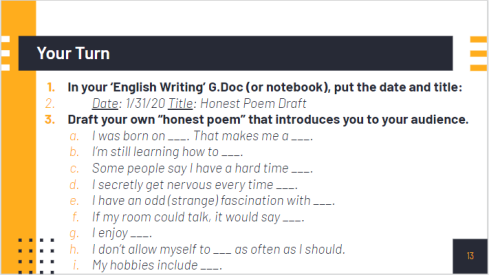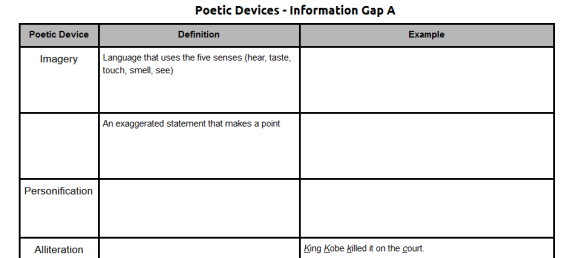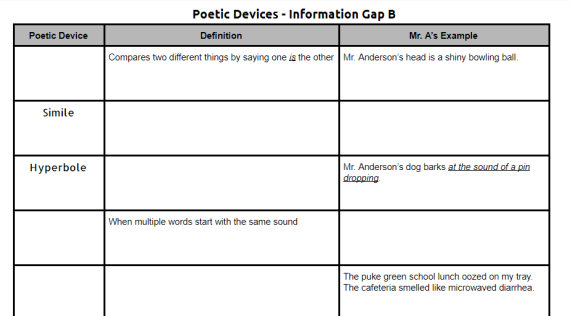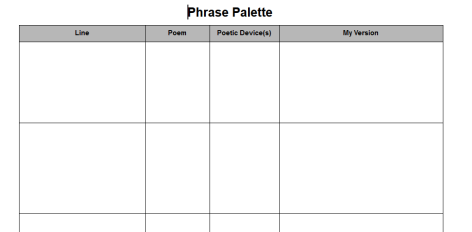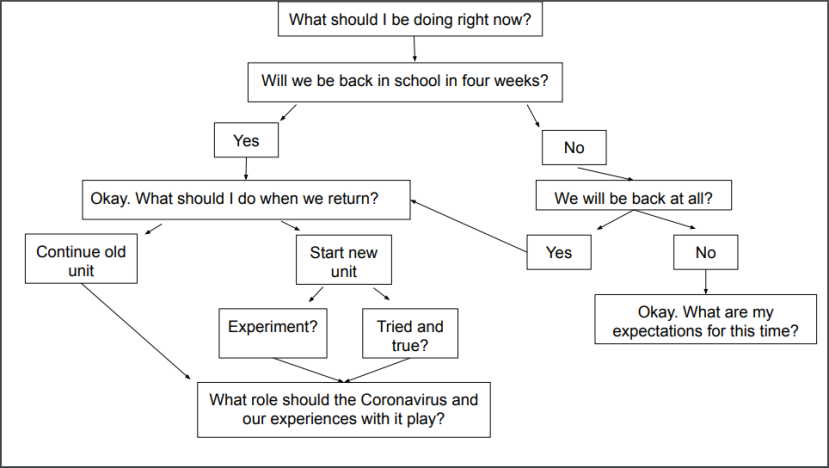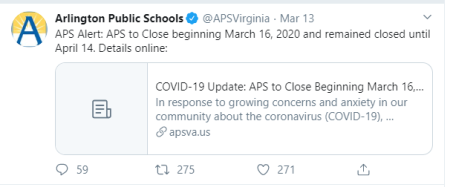“HERE” Martin thrust a crumpled sheet of paper at me. Before my mind could figure out what I was supposed to do with this botched piece of origami, I noticed the telltale Google Docs table outline that could mean only one thing: a point sheet.
For the three folks reading this who aren’t teachers, a point sheet is a common method used by schools to try and shape a student’s behavior. Teachers and student decide on a couple of academic, behavioral, and social goals to focus on and track throughout the day. The goals are usually pretty standard: completes all classwork, comes to class prepared, etc. The kid carries around the point sheet with them from class to class. At the end of each class, the teacher is supposed to mark off on the sheet whether or not the student met the goals. Point sheets draw from crude behaviorist notions of behavior modification.
I smoothed out the paper on an empty desk, clicked my pen, grabbed my laser pointer, and read. The instructions were clear. Each of Martin’s teachers were to put a “1” or a “0” next to each goal. A 1 meant Martin needed fewer than two reminders, whereas a zero meant he needed more than two redirections.
Martin’s goals were as follows:
- Treat teachers and students with respect.
- Complete all classwork.
Regardless of the relative simplicity of the point sheet’s instructions, Martin’s sheet was covered with a variety of symbols. Some teachers went with a check/check minus/check plus system; some teachers used checks and X’s, and other teachers filed the margins with last minute explanations and commentary.
My brain poured through its videotape of the class period that had just ended. Doing this with the particular brand of objective fidelity required by the point sheet would be challenging under any circumstances. It was especially vexing in the unadulterated chaos that is the interstice between two class periods.
Martin hovered next to me, hopping from his left foot to his right as he waited and watched. “I did good today, right? Right, Mr. Anderson? I did good today. My mom really wants me to do good today. I’ll get my phone taken away by my dad if I get any bad marks. But I did good today, right? Better, for sure. Right?”
I mean, Martin DID do well today. But here’s the thing: it took an Herculean amount of effort to get him there. I parked myself next to him whenever I could. That way anytime he ran his mouth (which he was forever never not doing), I could steer his monologic flow back towards the assignment. He worked on his handout, but he didn’t complete it. So what does that mean for his point sheet? If I use a literal reading of the goal, then I would have no choice but to give him a zero. But what if I overplanned the lesson? What if the instructional sequence I designed for the day was confusing? Maybe Martin found neither value nor relevance in my lesson. In that case, am I just asking him to do what I tell him to just because? Do I want to be cultivating students who value compliance?
His second goal, being respectful, was equally challenging to capture in a yes/no binary. Throughout the class period Martin required multiple redirections and nonverbal cues to stay on task. He interrupted me, made fart sounds at a student, and shouted non-sequiturs during the warm-up. He was currently flashing the laser pointer he had deftly yoinked from my hand around the room, narrowly missing several students’ corneas.
I spend more energy on him than most of the other students in his class combined. If class were a pinball machine, I’d be the rubber bumpers and Martin would be the pinball. He keeps plummeting towards the bottom and I keep catching him and boosting him back up. The game is played at a feverish pace. There’s no end. I just try to avoid running out of quarters until the timer runs out.
But was he disrespectful? Were his actions throughout the 42 minute period indicative of someone who is unkind and malicious? Martin is a neurodiverse student who struggles to fit into the complex mazes of overly punitive policies that form the core of public schooling. I’m not familiar with his home life, but I’d bet my job on some form of trauma in his family history. I’m not making excuses, just trying to understand exactly what is going on with this intelligent, quick witted, and observant adolescent in front of me.
In many ways, the point sheet can be seen as a synecdoche for school. Despite whatever’s going on at home, despite the energy I’ve spent cultivating a relationship with Martin, regardless of the staggering amount of labor I’ve expended trying my best to create rigorous, engaging, and culturally relevant lessons, at the end of the day, it all comes down to a single mark. There is no room for nuance or complexity. When the needs are so great and the resources are so few, everything is flattened and reduced.
Exhausted, I sign off on his point sheet, grab the laser pointer, and tell him to go to his next class. He looks at my notations and shouts “LET’S GO!” before plunging head first into the throng of students milling around outside my room, knocking down a sixth grader and sending assorted books and pencils flying in the process.
Later that afternoon I pack up my stuff and head out of my room ready to go home when something catches my eye: Martin’s point sheet crumpled up and ground into the carpet. It must have fallen out when he careened into that sixth grader. I shove it into my pocket, telling myself I’ll check in with him first thing tomorrow morning. But I don’t. I forget. Thank goodness Martin doesn’t get to fill out a point sheet for me.
—————————————————————————————————————————————–
-For the sake of anonymity, this post draws inspiration from a variety of students. “Martin” is not a stand-in for any particular student but instead a composite of many of the wonderful kids I’ve been fortunate to work with.

